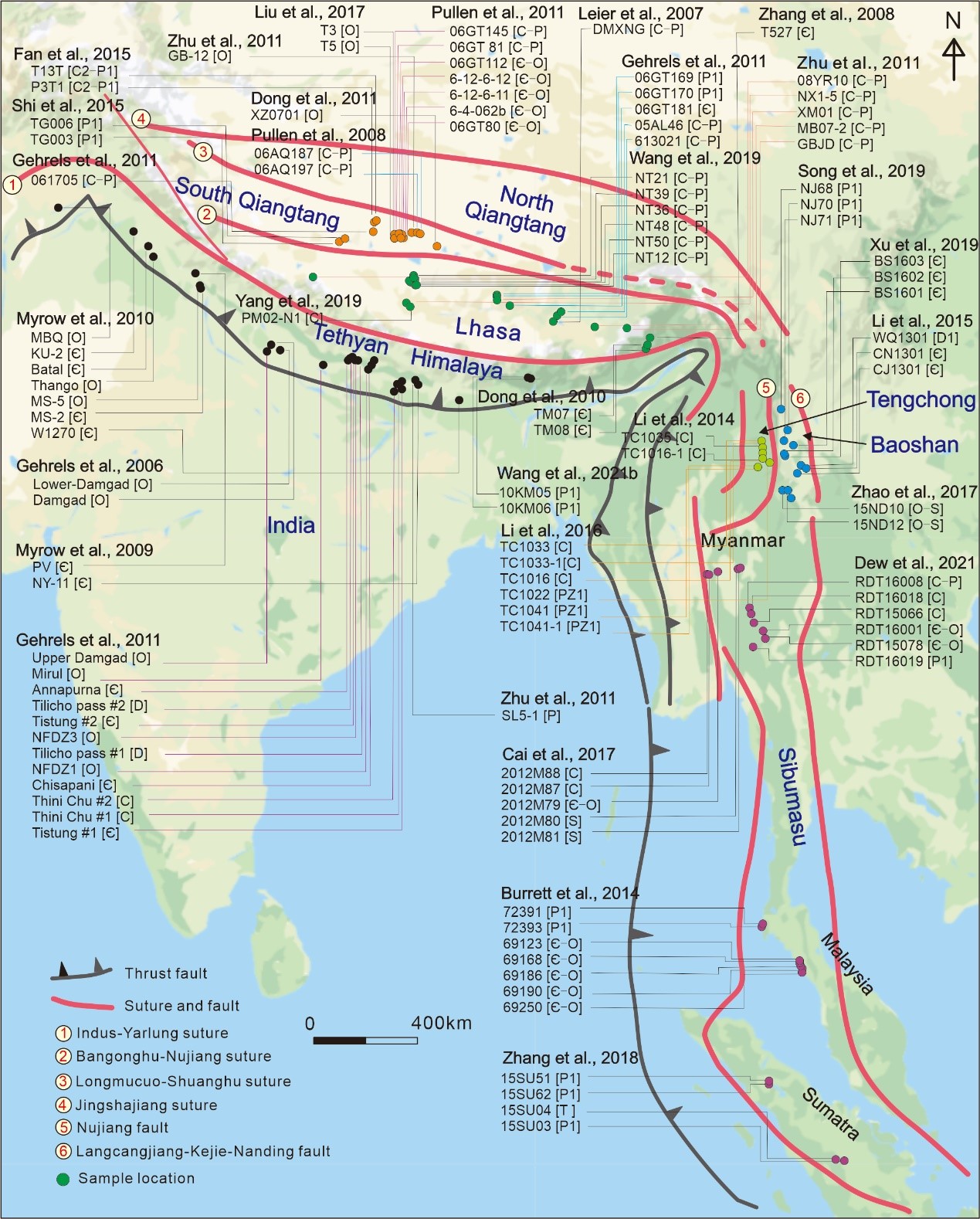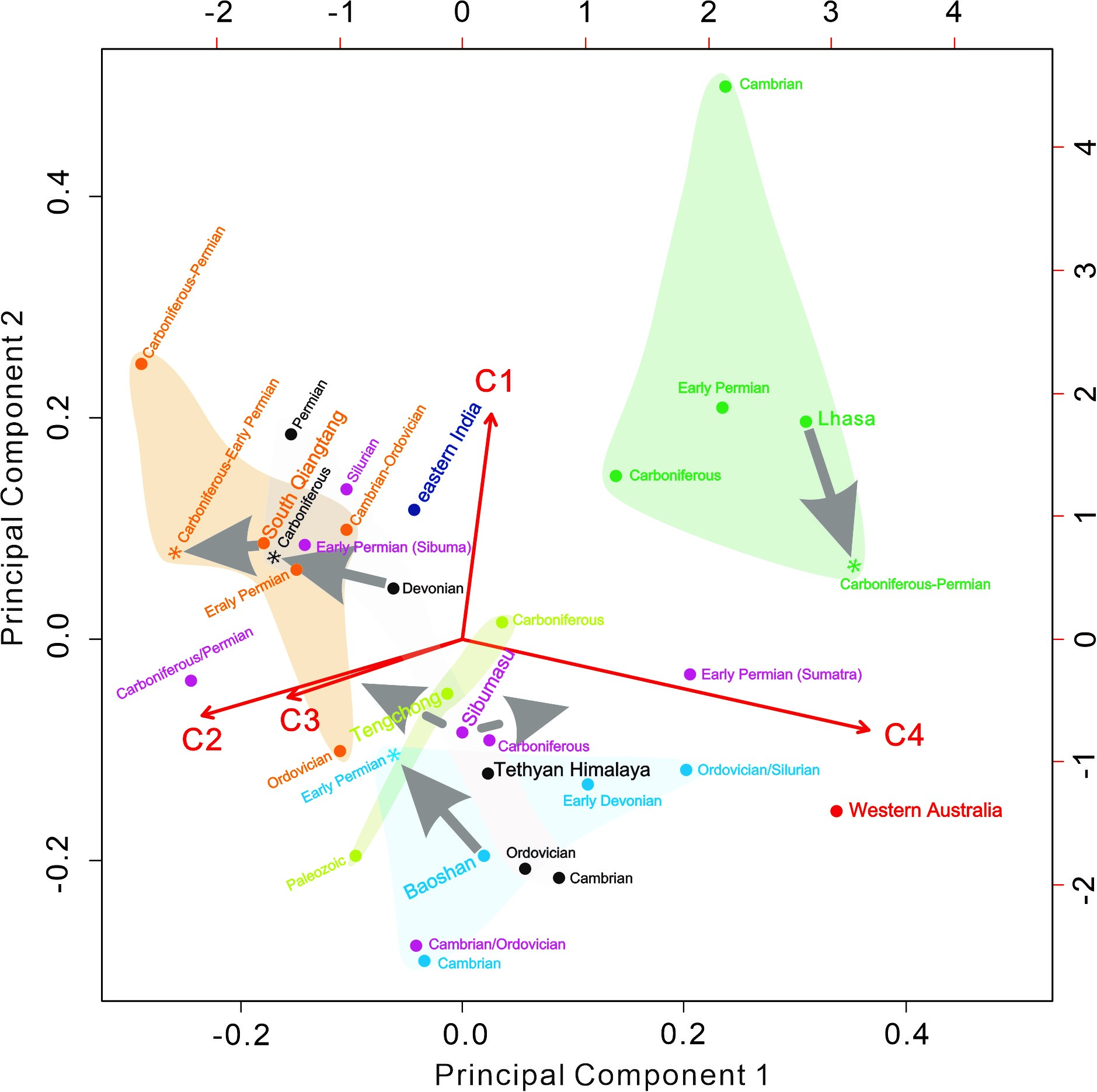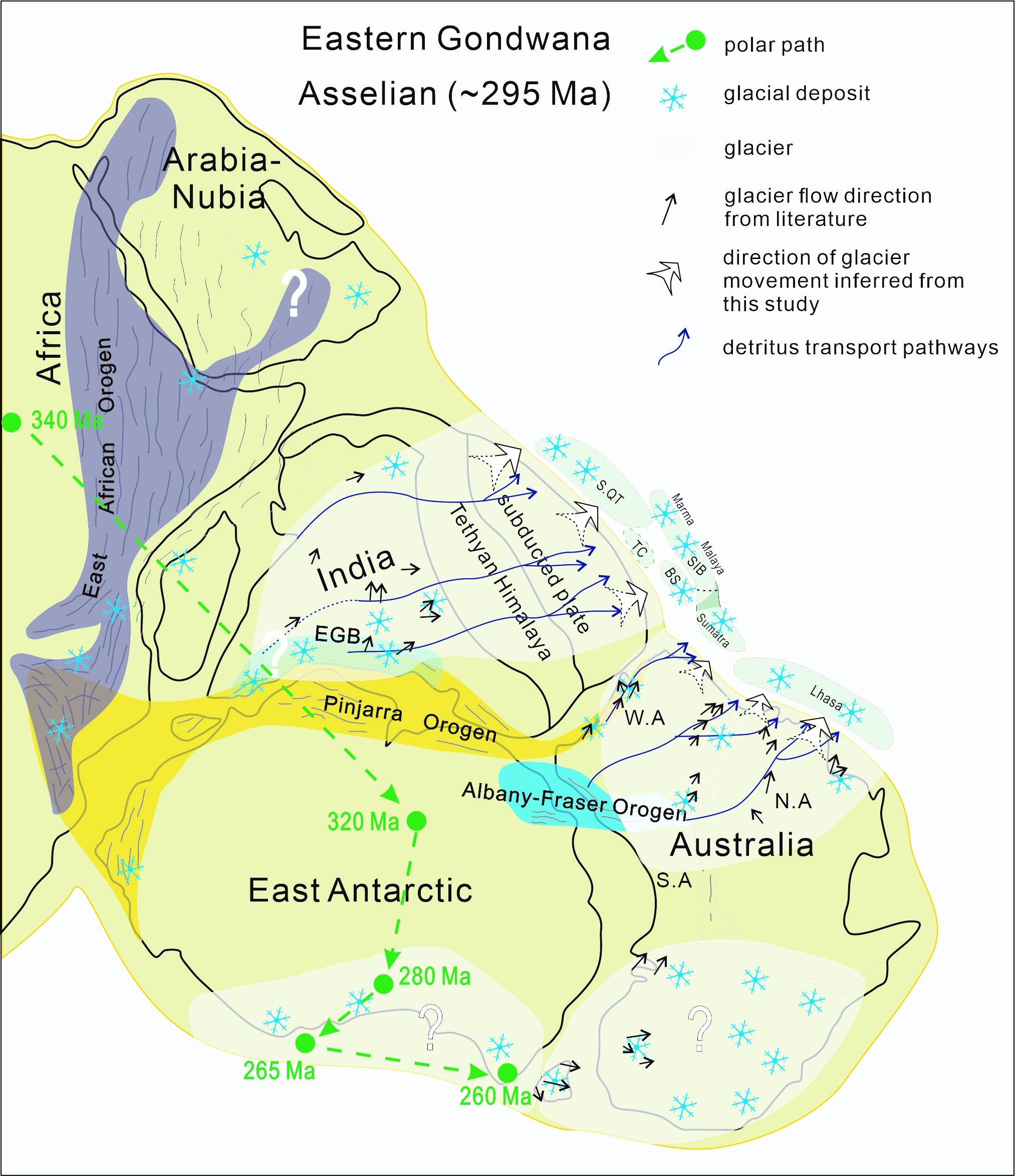Assembly of Gondwana commenced in the Neoproterozoic with final disassembly of the supercontinent completed by the Cretaceous. The configuration of major continental blocks (e.g., India, Australia, East Antarctica, and Africa) of Gondwana has been well reconstructed. However, paleopositions of some small continental fragments along the periphery of Gondwana are still in controversy.
The Baoshan, Tengchong, Lhasa, South Qiangtang, and Sibumasu terranes were located along the northern margin of Gondwana before late Early Permian rifting. A substantial amount of work has been carried out, aiming at reconstructing the paleopositions of these terranes from various disciplines such as sedimentary provenance, paleomagnetism, and paleobiogeography. These studies led to various paleogeographic models of northeastern Gondwana.
Recently, a paleogeographic study based on detrital zircon U-Pb ages and Hf isotopic values from Paleozoic strata of northeastern Gondwana, which is conducted by GAO Biao, his advisor Prof. CHEN Jitao, and Prof. QIE Wenkun from the Nanjing Institute of Geology and Palaeontology, Chinese Academy of Sciences (NIGPAS), in collaboration with the scientist Prof. WANG Xiangdong from Nanjing University. Primary component analysis (PCA) was used to visualize the relative relationship between these terranes and East Gondwana, in addition with the glacier distribution pattern on northeastern Gondwana in the late Paleozoic. The research achievements were published in the international journal Sedimentary Geology.
Based on a total of 8209 detrital zircon U-Pb ages and 1606 zircon Hf isotopic values from Paleozoic strata of northeastern Gondwana, a new paleogeographic model has been reconstructed. It indicates that the South Qiangtang, Baoshan, and part of Sibumasu were outboard of the northern margin of Indian Gondwana during the Paleozoic, whereas the Lhasa and Sumatra terranes were located along the northern margin of Australia. Based on provenance shifts of late Paleozoic glaciogenic sedimentary rocks in northeastern Gondwana, two main ice sheets are hypothesized to have developed during the late Paleozoic. This study further confirms the model of a multicenter glacier distribution pattern on Gondwana during the late Paleozoic ice age from a perspective of provenance.
The research is supported by the Strategic Priority Research Program of the Chinese Academy of Sciences, the National Natural Science Foundation of China, and the Second Tibetan Plateau Scientific Expedition and Researh Program. This is a contribution to IGCP 700 and DDE (Deep-time Digital Earth) projects.
Reference: Gao, B.*, Chen, J.T.*, Qie, W.K., Wang, X.D., 2022. Revisiting the paleogeographic framework of northeastern Gondwana in the late Paleozoic: implications from detrital zircon analysis. Sedimentary Geology. Available online 11 April 2022. https://doi.org/10.1016/j.sedgeo.2022.106144.

Schematic geological map of Southeast Asia and detrital zircon samples locations

Primary component analysis (PCA) of detrital zircon characteristic age population

Reconstruction of northeastern Gondwana with regional ice centers during the late Paleozoic ice age
Contact:
LIU Yun, Propagandist
Email: yunliu@nigpas.ac.cn
Nanjing Institute of Geology and Palaeontology, Chinese Academy of Sciences
Nanjing, Jiangsu 210008, China
Download:
